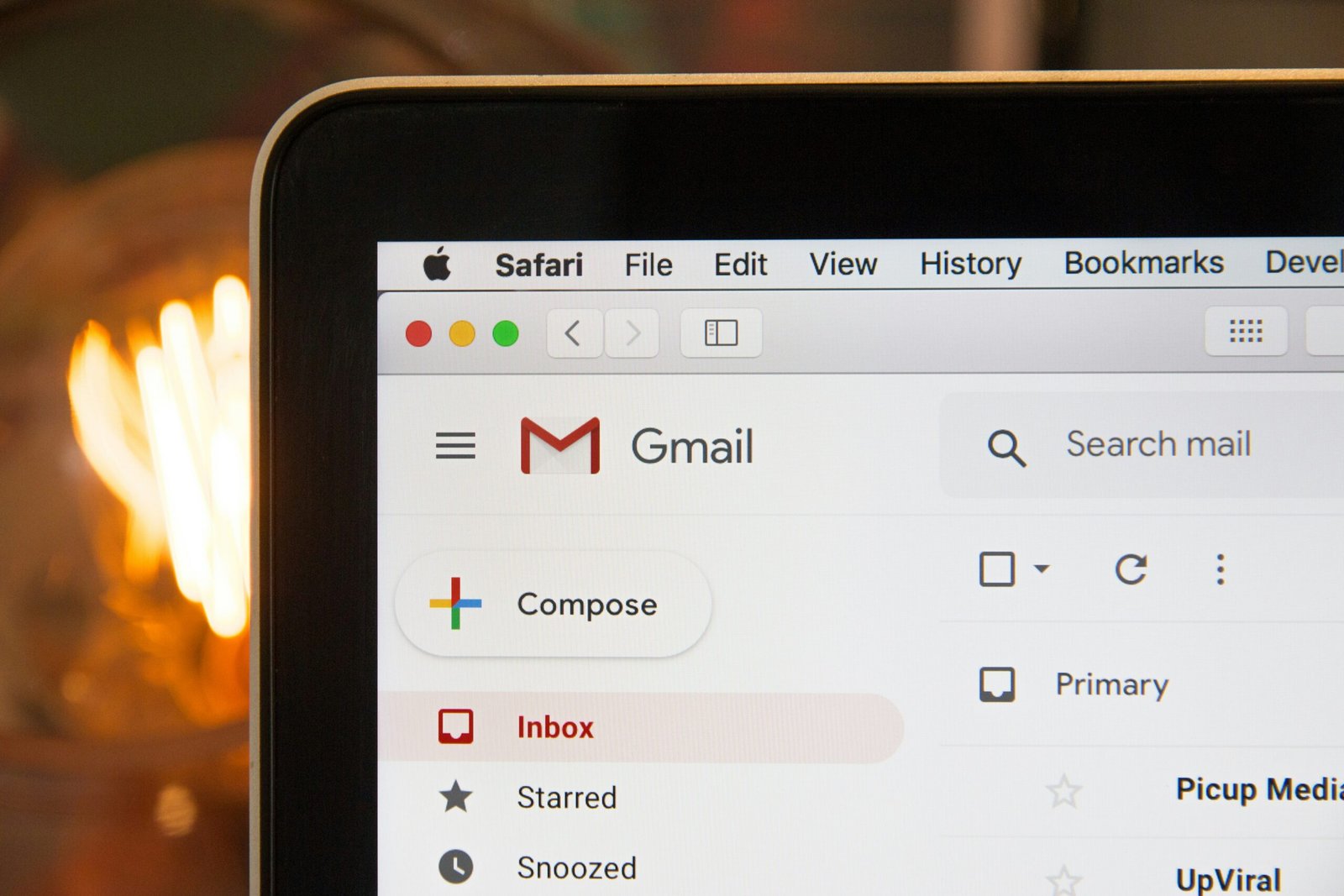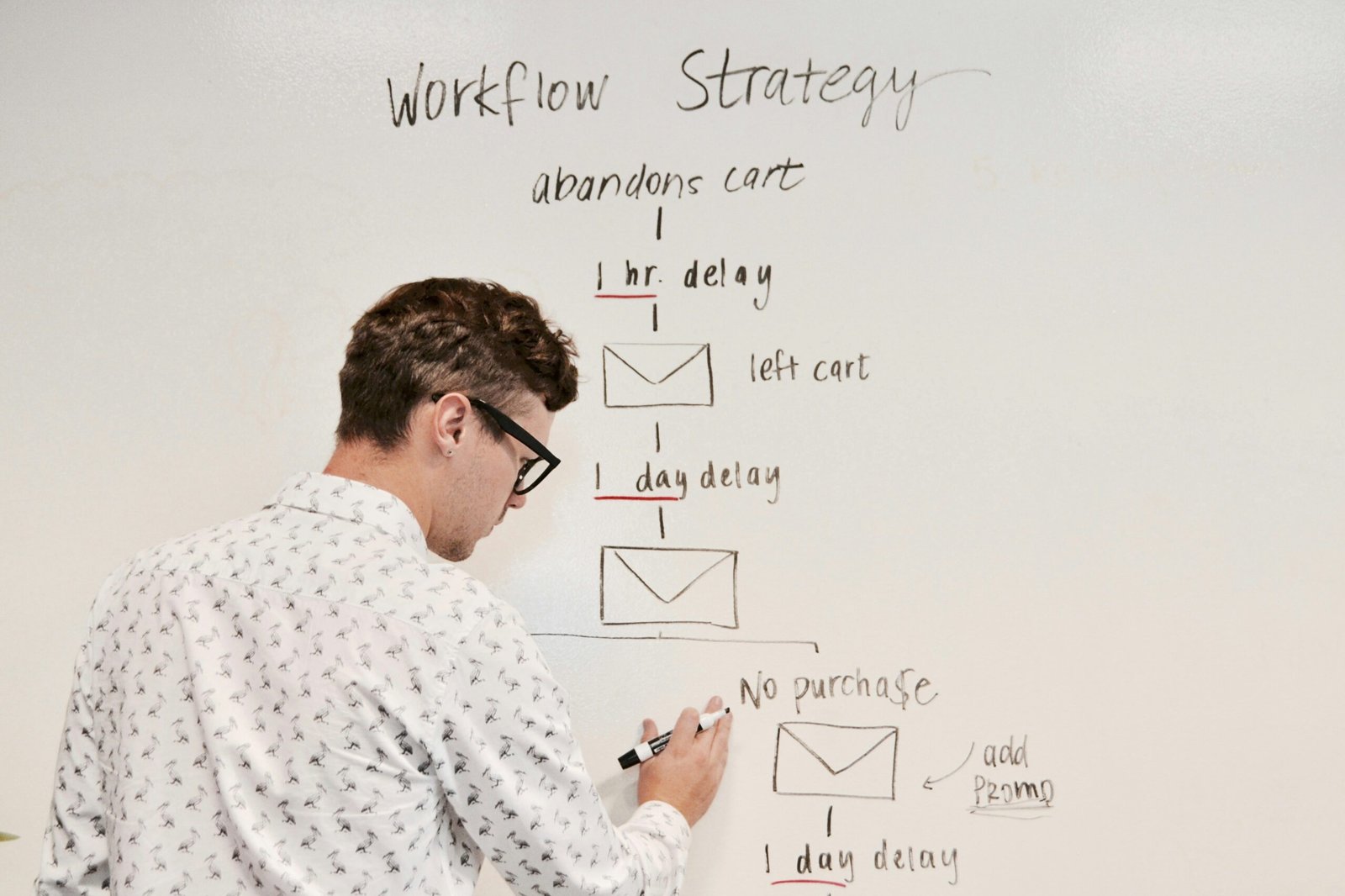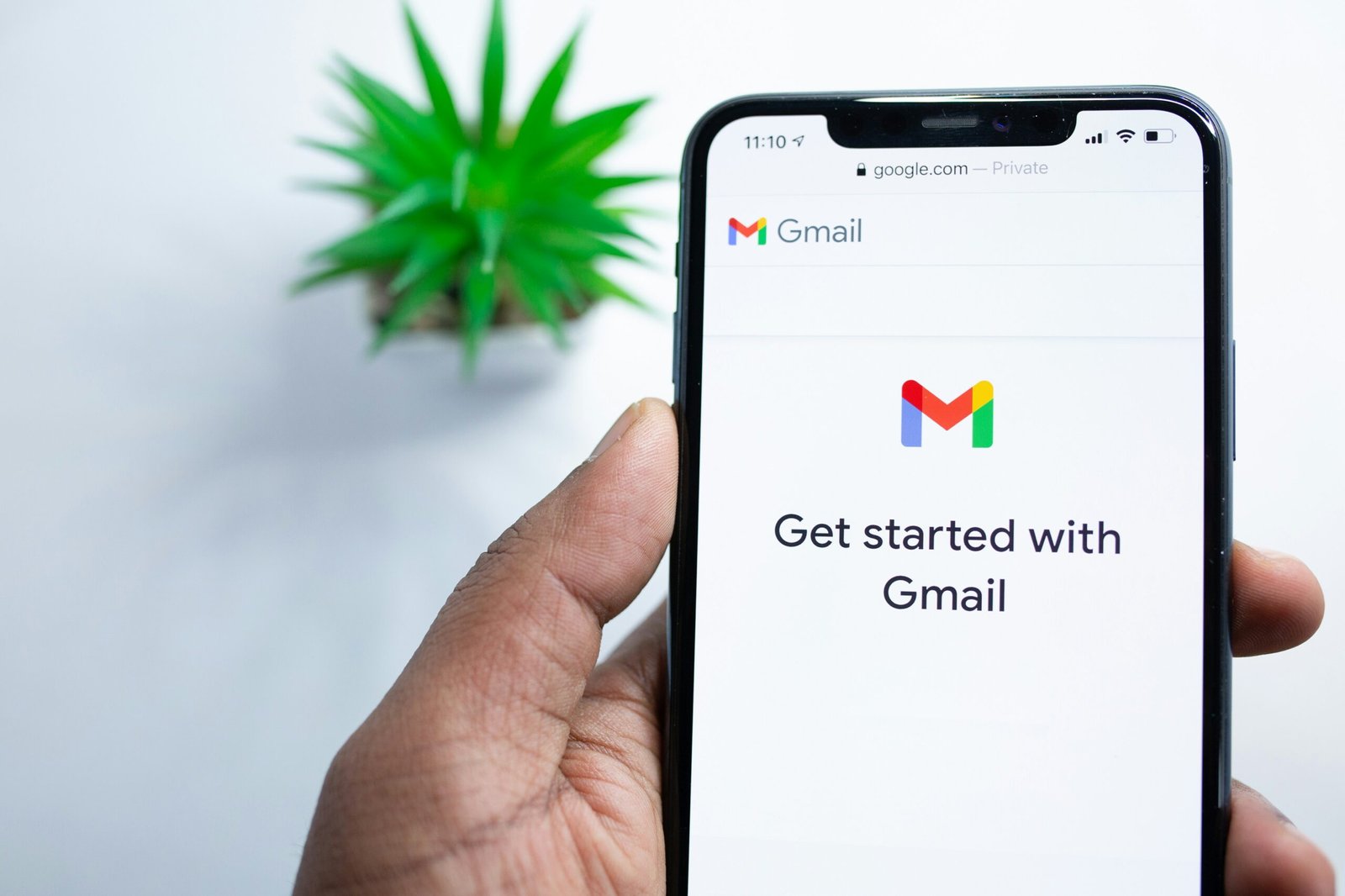Harnessing the Power of Email Newsletters for Steady Income in B2B E-Commerce
Introduction to Email Newsletters in B2B E-Commerce
Email newsletters have emerged as a vital component of marketing strategy in the realm of B2B e-commerce. They serve as a valuable tool for businesses to communicate directly with their clients and prospects, providing a consistent channel for building relationships and fostering engagement. Email marketing allows organizations to deliver tailored content, product updates, and industry insights straight to the recipient’s inbox, facilitating a more personalized approach to customer interaction.
In the competitive landscape of B2B e-commerce, the relevance and impact of email newsletters cannot be overstated. These newsletters are instrumental for businesses aiming to convert leads into loyal customers by nurturing relationships over time. By offering valuable information, promotions, and thought leadership content, companies can position themselves as trusted partners and resources within their industry. Furthermore, email newsletters help in keeping the audience informed about new trends, services, and products that can address their specific needs.
Engaging with customers through email newsletters not only encourages repeat business but also promotes brand loyalty and awareness. By maintaining a consistent schedule, businesses can ensure that their target audience remains receptive to their messaging and offerings. Additionally, the data collected from email campaigns, such as open rates and click-through rates, can provide valuable insights into customer preferences and behaviors, allowing marketers to refine their strategies continually.
As we delve deeper into this topic, it is essential to recognize the significance of crafting engaging and informative content within email newsletters. This approach not only captivates the audience but also positions B2B e-commerce businesses to capitalize on steady income streams effectively. The potential for enjoyment in creating these communications resonates with readers, leading to greater interaction and eventual business growth.
Understanding the Benefits of Email Newsletters
Email newsletters have become an essential tool for B2B e-commerce brands, offering a multitude of advantages that can drive sustainable growth. One of the primary benefits of using email newsletters is improved customer engagement. Regularly scheduled newsletters provide an opportunity to connect with your audience on a consistent basis, keeping them informed about new products, industry trends, and relevant company news. This consistent communication fosters a sense of connection and encourages recipients to engage with the content, thereby strengthening the relationship between the brand and its customers.
Another significant advantage is the enhancement of brand loyalty. By delivering valuable content through email newsletters, companies can position themselves as trusted sources of information. When recipients perceive value in what they receive, they are more likely to develop a sense of loyalty towards the brand. For example, a B2B company that shares insightful research, industry insights, or expert opinions within its newsletters can reinforce its reputation as a leader in its field, which can foster long-term customer retention.
Moreover, email newsletters contribute to the potential for increased sales and conversions. The targeted nature of email marketing allows brands to tailor their messages to specific customer segments, promoting products that align with their interests. According to recent studies, email marketing yields an average return on investment (ROI) of $42 for every dollar spent, underscoring its effectiveness in driving revenue. Businesses that routinely analyze newsletter performance metrics can optimize their campaigns for better results, leading to higher conversion rates and improved sales outcomes.
Real-world examples abound, with many B2B companies reporting significant improvements in engagement and sales following the implementation of effective email newsletter strategies. By harnessing this powerful marketing tool, e-commerce brands can unlock various benefits that support their long-term objectives and foster a thriving digital ecosystem.
Creating Engaging Content for Email Newsletters
Creating engaging content for email newsletters is crucial in retaining subscriber interest and fostering a loyal audience. One effective method is incorporating educational articles that provide value to the reader. These articles should address industry trends, offer insights, and share best practices. By positioning your brand as an authority in the B2B e-commerce space, you can enhance user engagement and encourage your subscribers to continue reading your newsletters.
Another essential component is product updates. Informing your audience about new or enhanced products can keep subscribers engaged by showcasing your company’s advancements and how they can benefit from them. These updates can include features, upcoming releases, and any promotional offers you may have in place. When recipients are made aware of your products’ latest developments, it keeps the communication dynamic and encourages them to interact with your brand.
Case studies are also an impactful way to engage recipients. By sharing real-life applications of your products or services, you can illustrate the tangible benefits they bring to customers. A well-structured case study detailing a problem, the solution you provided, and the resulting success can serve as a powerful testament to your offerings. This type of content resonates with fosters trust and credibility among potential clients.
Customer testimonials can further bolster engagement. Featuring positive experiences from existing clients can validate your brand’s reputation and encourage prospective customers to consider your products. Including concise quotes or video testimonials adds authenticity and relatability to your newsletters. Overall, a strategic mix of educational articles, product updates, case studies, and customer testimonials will create compelling email content that engages and retains subscribers, making your B2B e-commerce strategy more effective.
Designing Attractive Email Templates
Creating visually appealing email templates is integral to the success of any email newsletter in B2B e-commerce. An effective design not only captivates the audience but also reinforces the brand’s identity, making it essential for businesses to pay attention to various elements such as layout, color schemes, and typography. These components work together to create a memorable experience for readers and enhance overall engagement.
First and foremost, the layout of an email is crucial for readability and user experience. It is advisable to structure the content in a way that guides the reader’s eye through the newsletter. Utilizing a grid system can help maintain alignment and organization, while incorporating sections with clear headings can facilitate quick navigation. A clean, uncluttered layout allows for better presentation of information, enabling readers to easily digest key messages. Remember to leave sufficient white space; it helps in separating different sections and reduces visual fatigue, making the email more inviting.
Next, the choice of colors should meticulously reflect the brand identity while ensuring contrast and harmony. Utilizing a consistent color palette that aligns with the company’s branding promotes recognition and trust. Typically, a combination of primary and secondary colors can create a visually striking design. It is beneficial to stick to no more than three primary colors to avoid overwhelming the reader and to maintain visual coherence.
Typography is another essential aspect to consider for effective email templates. Selecting legible fonts in appropriate sizes ensures that the content is accessible to all readers, including those with visual impairments. Typically, using a sans-serif font for body text paired with a serif font for headings can strike the right balance between modern and traditional aesthetics. Additionally, maintaining a consistent font style across different templates fosters recognition and strengthens the brand’s visual identity.
Building and Growing Your Email List
Building and growing an effective email list is essential for any B2B e-commerce business seeking to harness the power of email newsletters for steady income. The first strategy to consider is leveraging social media platforms, which can serve as valuable tools for acquiring new subscribers. By promoting your newsletter on social media, you can create awareness and encourage your audience to sign up directly from these channels. Regular posts highlighting the benefits of subscribing, such as exclusive content or industry insights, will entice potential subscribers.
Another effective tactic is offering incentives to entice users into joining your email list. This could include downloadable resources, such as eBooks, whitepapers, or templates that cater directly to your target audience’s interests. By providing value upfront, you position your newsletter as a significant resource rather than just another promotional email. This approach not only increases your email subscriptions but also builds a connection with your audience based on trust and relevance.
It’s equally important to optimize your landing pages for conversion. A well-designed landing page focused solely on encouraging sign-ups can significantly enhance your conversion rates. Ensure that your landing page includes clear calls-to-action and concise information on what subscribers can expect from your emails. Additionally, consider using forms with minimal fields to avoid overwhelming potential subscribers. The more straightforward the process, the more likely individuals will complete their sign-up.
Finally, segmenting your audience is critical to maintaining an engaged email list. By categorizing your contacts based on industry, behavior, or preferences, you can send targeted messages that resonate with each group. This personalized approach not only increases open rates but also boosts engagement and overall satisfaction among your subscribers, ultimately leading to a robust and responsive email list.
Planning a Consistent Newsletter Schedule
Consistency in sending out newsletters is a pivotal aspect of maintaining engagement with your audience in B2B e-commerce. A well-defined newsletter schedule not only helps in establishing trust but also plays a crucial role in keeping your brand at the forefront of your customers’ minds. When planning your newsletter frequency, it is essential to consider various factors, including the preferences of your audience, the volume of content you can produce, and the trends within your industry.
Most businesses find that a bi-weekly or monthly newsletter works well in striking the right balance. Sending newsletters too frequently risks overwhelming your audience, leading to a higher unsubscribe rate. Conversely, sending them too infrequently may result in diminished interest in your brand. To determine the optimal schedule, you could conduct surveys or gather feedback from your existing subscribers about their preferences regarding the frequency and type of content they wish to receive.
Moreover, it is crucial to maintain quality over quantity. You should ensure that each newsletter is packed with valuable insights, such as industry trends, best practices, or case studies that resonate with your audience. Engaging content will keep readers looking forward to the next issue rather than treating it as a mere obligation. Additionally, including clear call-to-action buttons can lead to increased engagement with your products and services.
Ultimately, the goal is to establish a predictable rhythm that your audience can rely on, without overwhelming them. Regularly monitor the performance of your newsletters and be prepared to adjust your schedule based on engagement metrics. By finding the right cadence and prioritizing quality, you can effectively harness the power of email newsletters to cultivate a loyal audience in B2B e-commerce.
Measuring the Success of Your Email Newsletters
In the rapidly evolving world of B2B e-commerce, the effectiveness of email newsletters can significantly impact a brand’s overall engagement and revenue. To accurately gauge the success of your campaigns, it is essential to monitor specific key performance indicators (KPIs). Each metric provides valuable insights into how well your email newsletters resonate with your target audience.
One of the most critical KPIs is the open rate, which measures the percentage of recipients who open your newsletter. A higher open rate indicates that your subject lines and sender name effectively attract attention. Improving this metric can involve testing different subject lines, send times, and personalization strategies tailored to your audience. By analyzing these patterns, B2B brands can refine their approach and increase overall engagement.
Another vital metric to consider is the click-through rate (CTR). This KPI reflects the percentage of readers who not only open the newsletter but also click on links within it. A strong CTR suggests that the content is not only appealing but also relevant to the audience’s needs. To enhance this rate, ensure that your content is informative, concise, and includes compelling calls-to-action (CTAs) that guide readers towards desired outcomes, such as visiting your website or downloading resources.
Lastly, conversion rates should be monitored as they indicate the percentage of newsletter recipients who take a specific action, such as making a purchase or signing up for a webinar. By tracking conversions, brands can better understand the direct impact of their newsletters on revenue generation. Implementing A/B testing can provide further clarity regarding which elements lead to higher conversions, allowing for continuous refinement of future campaigns.
In conclusion, consistently evaluating these KPIs will empower B2B e-commerce brands to optimize their email newsletters, ensuring they not only engage recipients but also contribute meaningfully to the organization’s financial success.
Overcoming Common Challenges in Newsletter Marketing
Email newsletters serve as a powerful tool for B2B e-commerce marketers, providing a direct line of communication with potential and existing customers. However, marketers often encounter various challenges that can hinder the effectiveness of their newsletter campaigns. One prevalent issue is low engagement rates. Many subscribers may initially express interest but later become disinterested, leading to reduced open and click-through rates. To combat this challenge, marketers should focus on delivering relevant content tailored to their audience’s needs and preferences. Segmenting the subscriber list can also enhance engagement, allowing marketers to send personalized content that resonates with specific groups.
Another common challenge is managing unsubscribes. While it is natural for subscribers to opt-out, a high unsubscribe rate may indicate underlying issues with the newsletter’s content, frequency, or relevance. Marketers can address this by regularly soliciting feedback and adapting their strategies based on subscriber insights. Offering options for frequency preferences can also empower subscribers to tailor their experience, potentially reducing the likelihood of unsubscribes.
Moreover, compliance with regulations like the General Data Protection Regulation (GDPR) poses a significant challenge for marketers. Ensuring that email campaigns meet legal standards is crucial for maintaining trust and avoiding penalties. Marketers must be transparent about data collection practices and provide clear options for consent. Implementing double opt-in processes can further secure compliance while also confirming that subscribers truly wish to engage with the content. By addressing these challenges with thoughtful strategies, marketers can significantly enhance the effectiveness of their newsletter campaigns, ultimately driving sustained engagement and income growth in the B2B e-commerce sector.
Conclusion
In the dynamic landscape of B2B e-commerce, email newsletters represent a unique convergence of creativity and profit potential. Throughout this post, we have explored how crafting engaging, informative newsletters can not only enhance brand visibility but also establish meaningful connections with a target audience. By maintaining a consistent schedule and providing valuable content, businesses can effectively harness email marketing as a tool for steady income generation.
The fun in writing email newsletters lies in the creative process itself. Writers can experiment with diverse formats, tones, and themes, allowing for a personalized touch that resonates with readers. This creativity, coupled with strategic planning, can significantly elevate the effectiveness of the newsletters, ensuring they capture the interest and engagement of the audience. Moreover, the measurable nature of email campaigns enables brands to refine their approaches over time, optimizing content based on reader feedback and engagement metrics.
Furthermore, the potential for steady, predictable income through well-designed email newsletters becomes increasingly evident. By nurturing a loyal subscriber base and consistently delivering value, businesses can establish a reliable revenue stream that grows over time. The disciplined approach to email marketing can transform casual readers into customers, thereby enhancing overall business profitability.
In conclusion, embarking on the journey of writing email newsletters within the B2B e-commerce sector is not only a rewarding endeavor but also a pathway to sustained financial success. By infusing each newsletter with creativity and an understanding of audience needs, businesses can unlock the true potential of email marketing. There has never been a better time to take action; start crafting your email newsletters today and watch as your efforts translate into tangible results.







